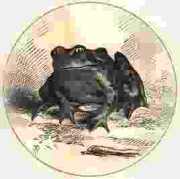 |
Sheldon Kranz Aesthetic Realism Consultant, Writer, Poet (1919-1980) |
|
Turning
Over a New Leaf; or, What Is Literature?
By
Sheldon Kranz
Presented
October 19, 1974, at the Aesthetic Realism Foundation, 141 Greene
Street, New York City
I believe that all literature is
the making one of opposites; and that when a poem or prose work stirs
us, it is because the permanent opposites in reality have been made one
by the poet or prose writer.
My purpose in this talk is to express my gratitude for the Aesthetic Realism way of seeing literature, a way which I have tested over many years as a college instructor, and as an editor, and which I have found to be true. I should like to show the large cultural meaning this way of seeing literature has for the world and for every self. It is this way of seeing that I love as much as I love anything. When I met Aesthetic Realism, I had completed my graduate work in literature at the University of Iowa. But with all my care for the prose and poetry of the centuries, I did not like the world. And further, I did not think it was possible. Literature was a solace for me, not a means of being closer to people and things. And then, I wasn't very sure of my taste, or my basis for criticism. In fact, I didn't have a basis. So my care for literature was also unsure. What the Aesthetic Realism way of seeing meant to my life, when I began to learn that literature is deeply and at every moment the same as what people are! Literature, Eli Siegel taught me, is a magnificent way of liking the world. He said: Literature is a way of a person seeing himself and the world as one. I learned two things in my
studies with Eli Siegel that I had learned nowhere else: (1) It is the
opposites in all their flexibility and subtlety that explain
the beauty
of such diverse works as Homer's Iliad,
Shakespeare's
 Othello,
Rimbaud's "O Seasons, O Castles," Dostoievsky's Crime and Othello,
Rimbaud's "O Seasons, O Castles," Dostoievsky's Crime and  Punishment, and Mark
Twain's story about the jumping frog. Mr.
Siegel found the element all great works have in common. It is the
opposites that join the
centuries of prose and
poetry, and give
coherence to man's emotions and perceptions.
(2) A major
contribution of his to literature is that the answer to
every
person's deepest question, How can
I
make sense out of the warring
contradictions inside me? can be found in the technique of a
successful
poem, or story, or novel. To see literature this way is to see it as it
is, and to answer a person's deepest hope as it did mine. Punishment, and Mark
Twain's story about the jumping frog. Mr.
Siegel found the element all great works have in common. It is the
opposites that join the
centuries of prose and
poetry, and give
coherence to man's emotions and perceptions.
(2) A major
contribution of his to literature is that the answer to
every
person's deepest question, How can
I
make sense out of the warring
contradictions inside me? can be found in the technique of a
successful
poem, or story, or novel. To see literature this way is to see it as it
is, and to answer a person's deepest hope as it did mine.Take, for example, freedom and order. In "The Aesthetic Method in Self-Conflict" [in Self and World], Mr. Siegel writes: The question confronting everyone
is: Is it possible for a human being to do truly as he pleases...to
show his instincts, his impulses, his drives--and at the same time
satisfy his sense of order, of precision, of stability?...Aesthetic
Realism says, yes....
He then proceeds to show how a novel puts these opposites together: In a good novel you
see a certain precision, "has-to-be-ness" or inevitability--that is,
there is order in a good novel. And in a novel, too, you feel the
characters act freely, the writer is not constrained, there is growth
and there is strangeness in the novel... the novel has
freedom....Freedom and order in a good novel, have their hands in
friendly fashion on each other's shoulders.
For example, Jane Austen's
narrative in Pride and Prejudice
seems to spring from the page and to
be happening at the very moment we are reading about Elizabeth Bennet,
her family, and Darcy. The prose is spontaneous and free, and yet Miss
Austen's novel is one of the most carefully constructed in English
literature. It is tidy, and has, as Mr. Siegel puts it, a certain
"has-to-be-ness." Pride and Prejudice
is everywhere free and orderly,
abandoned and precise, as we want to be. Take these sentences. Mrs.
Bennet, whose purpose in life is to marry off her five daughters, has
just heard that Mr. Collins has become engaged to Charlotte Lucas:
Mrs. Bennet was, in
fact too much overpowered to say a great deal while Sir William
remained but no sooner had he left them than her feelings found a rapid
vent. In the first place, she persisted in disbelieving the whole
of the matter; secondly she was very sure that Mr. Collins had been
taken in; thirdly, she trusted that they would never be happy together;
and fourthly that the match might be broken off.
That second sentence rattles along
like Mrs. Bennet's speech--foolish and a little spiteful. But it
is very tidily divided into four parts, separated by semi-colons.
It is structured carefully to give the feeling of spontaneity, while
being most orderly.
In the first place,
she persisted
in disbelieving the whole of the matter; secondly she was very sure
that Mr. Collins had been taken in; thirdly, she trusted that they
would never be happy together; and fourthly, that the match might be
broken off.
Wildness and order are here; and this is what we want in our lives. 1. Feeling Good and Feeling Bad Feeling good and feeling bad is
one way of describing the life of every person. These two human
emotions are the subjects of every Aesthetic Realism consultation; and
they have been described honestly and beautifully from ancient times to
the present. To know that someone 2,000 years ago in Greece or
someone in 17th century France could feel happy or depressed pretty
much as we do, is reassuring, and makes us feel more connected to the
whole world.
However, the way a poet looks at
his emotion of feeling good or bad is what is crucial and what we all
need to learn for our lives. People have felt good and bad and have
written of these feelings badly. A good poet looks at his emotion and
has an emotion about the emotion. This makes for that most
mysterious but necessary thing in poetry: music--the way one syllable
goes with another syllable, the way one word goes with another
word. "What distinguishes a poetic emotion from the customary
kind," writes Eli Siegel in his Preface to Personal and Impersonal; Six Aesthetic
Realists, "is that while a poetic emotion is personal and
impersonal at once, the customary kind can be seen as just personal."
So I begin with a poem expressing
feeling good by a young woman of 19th century America. It is a
very good poem, and bold in its images, because she compares her
happiness to drunkenness. Intoxicated by the summer days, the
world is like a series of inns in which she gets inebriated.
However, the poem isn't good just
because of its bold images. It is good because Emily Dickinson really
felt her happiness was like a good drunkenness; and she shows it
through the way she uses words. The lines are free yet firm (as
we want to be). The lines are jaunty yet modest (as we would also like
to be). Here is Emily Dickinson looking at her emotion of feeling good,
and having an emotion from that:
I
Taste a Liquor Never Brewed
I taste a liquor never brewed, From tankards scooped in pearl; Not all the vats upon the Rhine Yield such an alcohol! Inebriate
of air am I,
And debauchee of dew, Reeling, through endless summer days, From inns of molten blue, When landlords turn the drunken bee Out of the foxglove's door, When butterflies renounce their drams, I shall but drink the more! Till seraphs swing their snowy hats, And saints to windows run, To see the little
tippler
Leaning against the sun! Take the line, "Reeling through
endless summer days." What makes that so successful as poetry is the
beautiful abandon in the line, the sense of sunny space and release,
while it is quite regular metrically, made up of a trochee and two
iambics. The line is tidy even as it reels happily. And then the final
two lines which are famous in American poetry: Seraphs and saints are
going to look out of the windows of heaven,
To see the little
tippler
Leaning against the sun! The picture of New England's Emily
Dickinson as a little tippler leaning drunk and serene against the huge
sun is something one might see in a good animated cartoon, showing Man
and Nature in a new and happy friendship. This is Miss Dickinson's way
of saying she likes the world--and it is poetic. There is also a
relation of
the small and large that it dramatic, both visually and verbally.
"Little tippler," with the short i's makes for a feeling of the
diminutive; and then this little tippler leaning against the great sun
as if it were a convenient wall has love in it. It is a little
like Charlie Chaplin leaning ecstatically against a planet in the sky.
But just as the world can look
sunny and blue, poetry tells us it can also look gray. Another American
poet, this time of the 20th century has written a very good poem where
feeling bad
makes everything look cold, dull, and empty. Edna St. Vincent Millay
has expressed well what millions of people have felt not so poetically.
The poem is called "Ashes of Life."
Ashes
of Life
Love has gone and left me, and the days are all alike. Eat I must, and sleep I will--and would that night were here! But ah, to lie awake and hear the slow hours strike? Would that it were day again, with twilight near! Love has gone and left me, and I don't know what to do; This or that or what you will is all the same to me; But all the things that I begin I leave before I'm through-- There's little use in anything as far as I can see. Love has gone and left me, and the neighbors knock and borrow, And life goes on forever like the gnawing of a mouse, And tomorrow and tomorrow and tomorrow and tomorrow There's this little street and this little house. In that final stanza particularly,
we have an expression of dull, aching depression that is notable.
It reminds one of two other expressions of feeling bad, both by
Shakespeare. The first is when Hamlet says:
How weary, stale,
flat and unprofitable
Seems to me all the uses of this world.... And there is Macbeth's: Tomorrow and tomorrow
and tomorrow
Creeps in this petty pace from day to day To the last syllable of recorded time.... Miss Millay has done the fine
thing of expressing feeling terrible, energetically. She has presented
the dreariest picture she can with spirit and with a music that is
almost skipping, yet appropriate. "There's this little street, and this
little house." But it is preceded by the slow and repetitious line,
"And tomorrow and tomorrow and tomorrow and tomorrow." Yet even that
line has a definite beat which gives the line spirit and form. Feeling
bad in real life has no spirit and it has no form. It is a
blob--that is part of the feeling bad. But Miss Millay has put
opposites together, which is why her poem about feeling bad has
lived. The poem is heavy, as in feeling bad, but the lines have a
life. It is in the beat and music. You can hear it in the first
line:
Love has gone and
left me, and the days are all alike.
The line is melodic and lilting, though what it is saying is dismal enough. And Miss Millay, because she found this subject interesting, describing what she felt when love left her, has seen that the details have variety--something we refuse to see when we feel bad. For instance, there is a nice distinction of verbs in the second line: "Eat I must, and sleep I will" making for color and variation in the line. And then in the very fine third stanza, she juxtaposes her inertia with the activity of others, making for a little drama--"Love has gone and left me, and the neighbors knock and borrow"--in the meanwhile that lilting rhythm continues carrying the poem along. And then life is compared grimly to a gray little mouse gnawing dully away in some wall, and there is a good sense of the endless futility of things that is so much a part of feeling bad. And life goes on
forever like the gnawing of a mouse,
And tomorrow and tomorrow and tomorrow and tomorrow There's this little street and this little house. And so we come to one of the
wonders of literature, explained for the first time by Aesthetic
Realism: that a good poem can express miserable feelings just as well
as it can express feelings of pleasure and joy. It is because in
both, the opposites of reality have been made one by the poet. And in
this fact lies our salvation. Poetry shows that all our feelings
can be seen as objects, and, as such, they can be looked at and
described well. Edna St. Vincent Millay meets Shakespeare in telling us
that feeling bad can be interesting and as worthwhile a subject of
study as feeling good. In fact, it is the biggest opponent to
feeling bad there is; for the expression of this perception can make
for pleasure, as it did with Miss Millay, as it does with us hearing
her poem. Reality may make us feel bad, but it also allows us to
describe it well--and that is a large point in its favor.
|
|
Copyright 2006 SheldonKranz.com